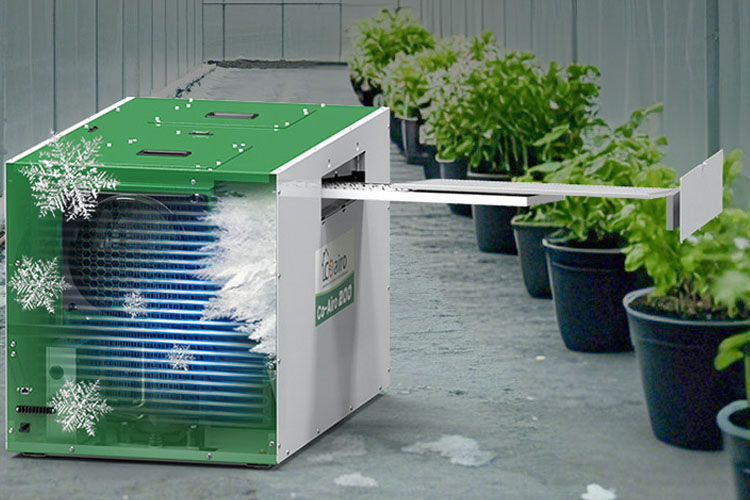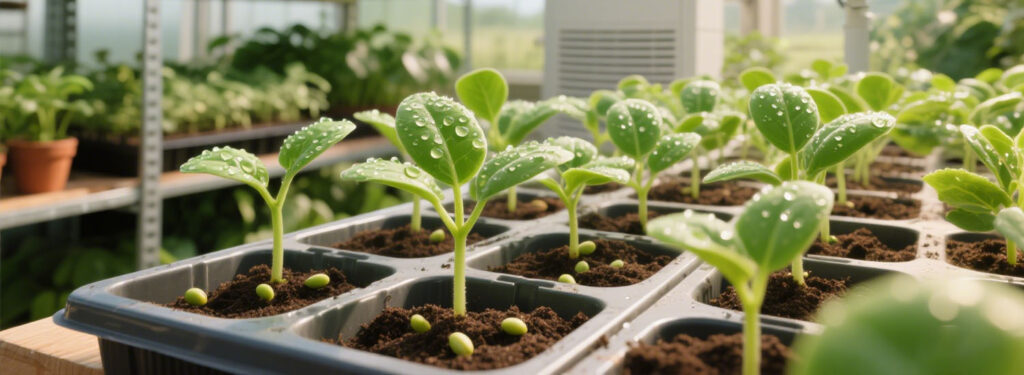
Nursery Humidity Control Strategies: Promoting Germination and Shortening the Cultivation Cycle
Nursery profitability lies in the health and growth of its plants. While light and water are obvious factors, it is humidity that determines the ultimate success of a crop. It is not just about keeping the plants from drying out, but also about using it as a strategic lever for speeding up seed germination and shortening the entire cultivation cycle.
A carefully managed environment can boost your germination rates and reduce the time it takes to get plants from seed to harvest. Let’s take a detailed look at nursery humidity control strategies that can transform your practice.
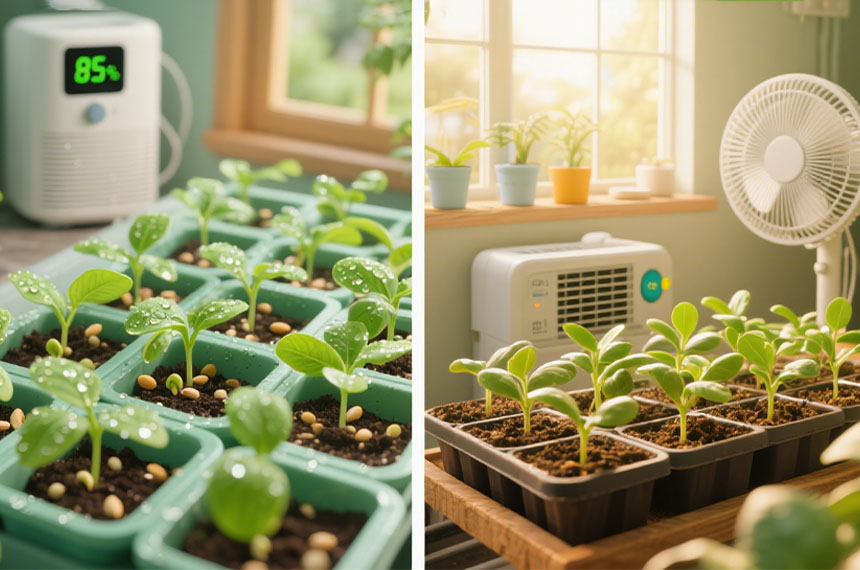
Key Takeaways
- Humidity is key for germination: Seeds need high humidity to absorb water and start the sprouting process.
- Balance is essential: Too much moisture leads to disease, while too little causes stunted growth and stress.
- Use alternating cycles: Strategic humidification for germination, followed by dehumidification for growth, builds stronger plants.
- Proactive Control: Use dehumidifiers, smart ventilation, and monitoring to maintain the ideal environment.
Consistency is a game-changer: A steady approach to humidity and watering can significantly shorten your overall cultivation cycle.
The Principle of Using Humidity to Boost Seed Germination
The process of seed germination is highly sensitive to its surrounding environment. Seeds need proper hydration to swell, break their protective coats, and grow. Humidity acts as a catalyst in this entire process. It provides an ideal environment for the seeds, and they absorb moisture in a process called imbibition.
Once the seed absorbs water, it activates the necessary biochemical reactions to convert its stored nutrients into energy for the embryo. Experts suggest that humidity levels between 70% and 90% are best for this stage.
Remember, it is important to maintain a delicate balance. High humidity levels are beneficial for germination and growth, but maintaining them for too long can be harmful. On the other hand, low humidity is also a problem. It slows the process of germination, causing stress, leading to weak, inconsistent seedlings.
Five Practical Nursery Humidity Control Strategies
From the early seed stage, plants need a good balance of humidity and moisture to grow and thrive. Whether you are a nursery owner or managing an indoor grow room, this balance is key to a successful cultivation cycle.
Here are five simple, research-backed nursery humidity control strategies for creating the perfect environment for your plants.
Strategy #1: The Alternating Humidity Cycle
A controlled humidity environment can speed up the growth process in a nursery or a greenhouse. You can use the “alternating humidity cycles” strategy to achieve this.
Humidification: Research shows that a high-humidity environment supports rapid germination and initial growth by preventing moisture loss. Humidifiers can help you create these conditions. They increase the air’s moisture content and provide seeds with the ideal environment to absorb water. This activates the germination process without the risk of drying out.
Dehumidification: Once the seeds have started germinating, it is important to move to dehumidification. A different study shows that reducing relative humidity at this stage helps the plant to develop a stronger root system. Use whole-house dehumidifiers to control the humidity levels. They also prevent the growth of mold and fungal diseases that thrive in a damp environment.
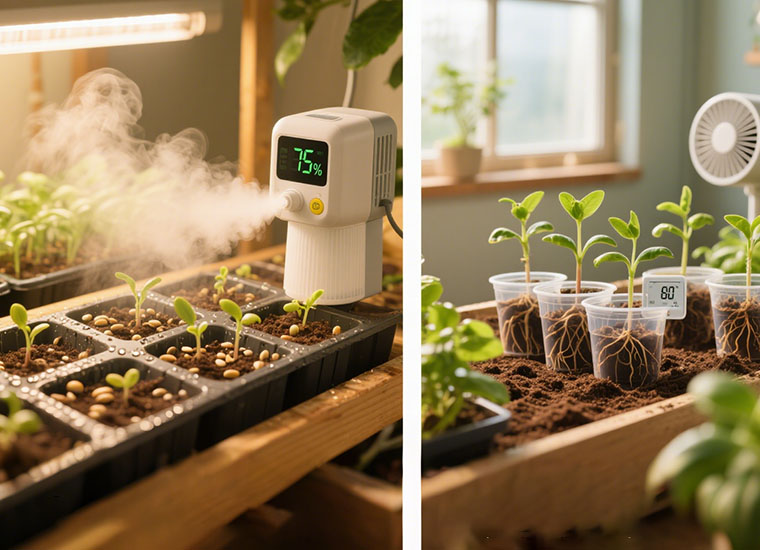
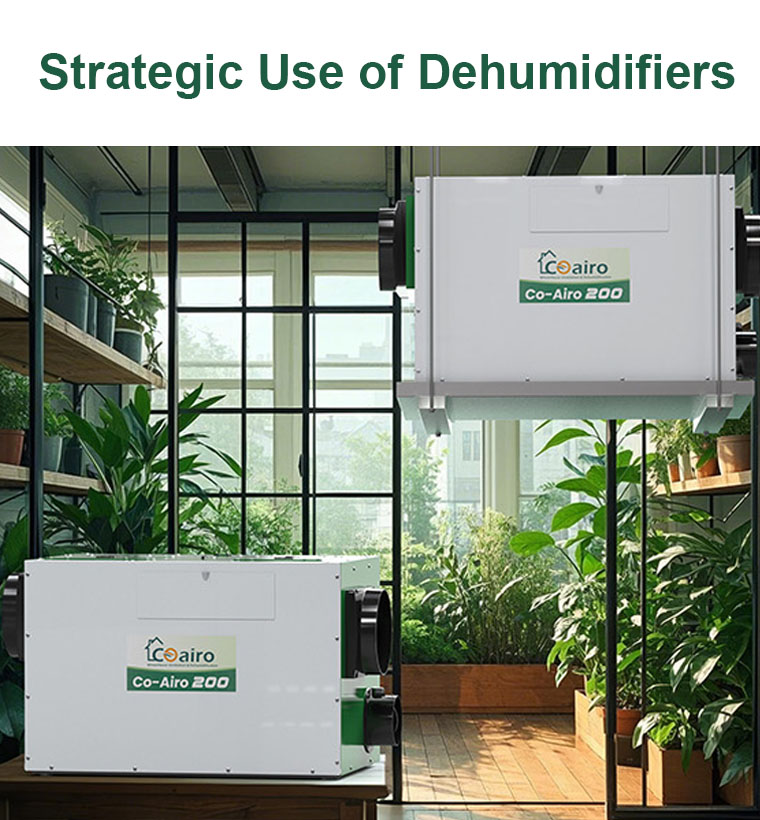
Strategy #2: Strategic Use of Dehumidifiers
Using a dehumidifier is one of the best nursery humidity control strategies. Humidity levels naturally rise in a nursery at night as temperatures drop. This also happens after a watering cycle. High humidity creates a perfect environment for mold and fungi growth. A dehumidifier helps you lower the air’s moisture during high-risk periods and protect the cultivation cycle.
This approach helps maintain consistent, healthy humidity levels across your entire nursery. Protecting your plants not only keeps them healthy but also reduces the need for pesticides and chemical treatments.
Strategy #3: Smart Airflow and Ventilation
Good circulation prevents moisture from becoming stagnant in your nurseries and greenhouses. Humid air creates ideal conditions for diseases like powdery mildew, downy mildew, black spot, and rusts to flourish. These conditions can seriously damage or destroy foliage, reduce plant stamina and crop yield.
You can use natural airflow by opening windows and doors, especially during cooler parts of the day. Oscillating or ceiling fans and exhaust systems can actively circulate air and remove stale, moist air. Dehumidifiers actively pull excess moisture from the air and maintain desired humidity levels. They work together with ventilation to keep your plants healthy.
Strategy #4: Real-Time Humidity Monitoring
You can’t control what you can’t measure. In a nursery or greenhouse, this means you need to monitor indoor moisture levels in real-time to make informed decisions. A hygrometer is an essential tool that provides a precise reading of the relative humidity. It helps you understand the exact conditions and make proactive adjustments accordingly.
Modern dehumidifiers also come with built-in features that let you set a desired humidity level. These smart devices automatically turn on and off to maintain that target. This ensures your nursery’s environment stays healthy without constant manual supervision.
Strategy #5: Consistent Watering Schedule
Don’t forget to keep your nursery well-hydrated. A consistent watering schedule maintains optimal humidity, especially during hot summers when moisture evaporates quickly. For fruits and vegetables, this practice is extremely important from the very beginning.
A steady watering routine ensures that the seeds and young seedlings have the moisture they need to germinate and begin taking up essential nutrients. Inconsistent or overwatering, however, can lead to different issues such as rots, cracks, and stunted growth.
To establish a consistent routine, consider watering in the morning. During hot summer months, you may need to water twice a day. You can also use an automated irrigation system or a moisture meter to guide your timing.
Take The Coairo Advantage For Your Nursery
From a tiny seed to a full harvest, humidity is the silent driving force behind your plant’s growth cycle. The key to success is balance, not too much, not too little. Achieving this level of precision requires a reliable solution such as a dehumidifier.
A reliable solution like a dehumidifier is essential for achieving this level of precision. Coairo’s whole-home dehumidification systems offer a comprehensive, hands-free approach. They are perfectly suited for greenhouse nurseries, tray seedling cultivation, and high-density seedling rooms.
If you are considering a solution that supports healthy plants and green architecture, explore Coairo. We provide customer-centric solutions designed to create the perfect environment for your plants and help you build a more sustainable future.
